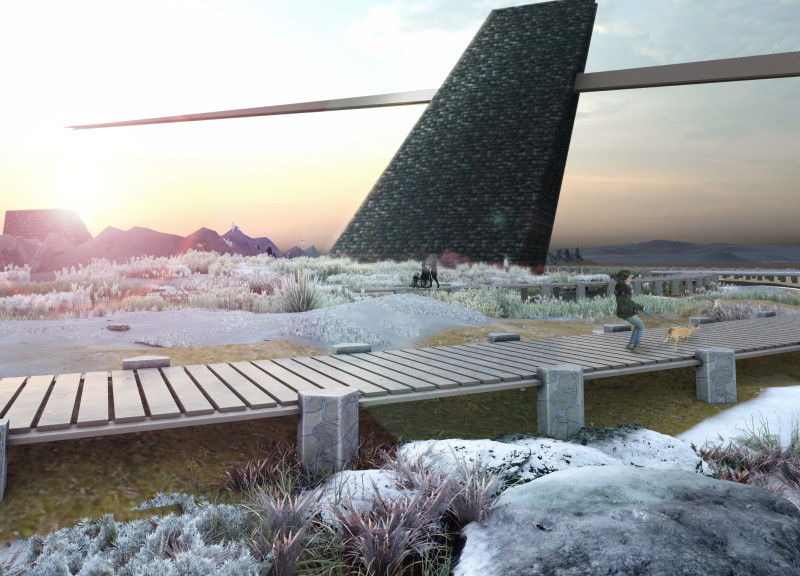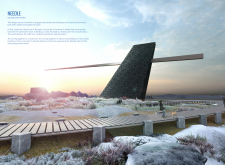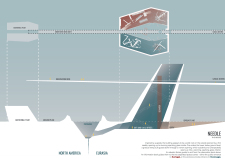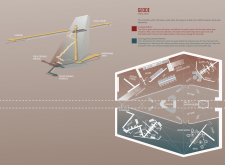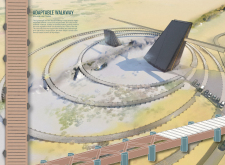5 key facts about this project
The architecture combines functionality and aesthetics, utilizing forms and materials that reflect the surrounding landscape. The project features a needle-like observation deck, which extends into the space, offering panoramic views of both the geological features and the unique ecosystems of Iceland. The design underscores the importance of placing architecture within its context while facilitating a dialogue between the man-made and natural worlds.
Unique Design Approaches
One of the defining elements of this project is its focus on sustainability. The materials used include stone, glass, wood, and reinforced concrete, chosen for their compatibility with the local environment. This careful selection ensures durability while minimizing the ecological footprint. The transparent glass sections enable visitors to experience significant views while blending with the landscape.
Geothermal integration plays a vital role in the design. Access to geothermal energy provides both heating and educational opportunities for visitors, as they can learn about natural energy sources. The architectural layout promotes walkability, featuring paths that connect key areas, leading visitors through a journey rather than a simple transit. The design encourages exploration and interaction with the natural features of the site.
Experiential Zones and Functionality
The internal organization includes designated areas that cater to different visitor experiences. Public zones invite casual interaction, while more private sections offer an immersive learning environment. The layout incorporates flexibility to accommodate various events and educational programs.
Elevated walkways and observation points enhance the visitor experience by inviting engagement with the landscape from multiple perspectives. These features encourage a deepened understanding and appreciation of the geological phenomena present in the site.
Overall, the Needle project integrates thoughtful design elements that create a cohesive experience. To explore the architectural plans, sections, and designs further, readers are encouraged to delve deeper into the project's presentation for complete insights into its innovative architectural ideas.


